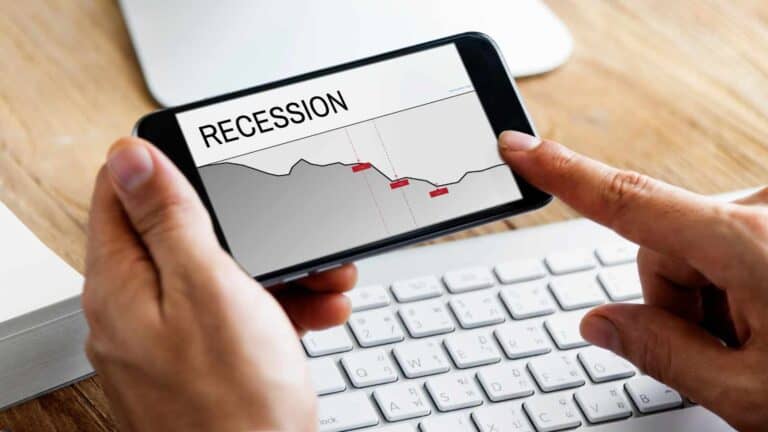How Work Became Unsustainable for Ordinary People
As Muhammad Fikry Aransyah and Adietya Arie Hetami show in their study on workplace politics, escaping internal power games is nearly impossible — and these dynamics quietly shape who gets promoted, who gets sidelined, and who burns out first.
Their findings point out that even the most competent workers are judged as much by perception, alliances, and visibility as by actual performance. And that’s only one layer of the modern grind. Ordinary people are now navigating a landscape where housing pushes them into punishing commutes, healthcare ties them to jobs they dislike, and wage growth lags far behind rising costs.
Digital tools have erased the line between “on” and “off.” Productivity culture inflates expectations together; these pressures form a system in which work is no longer a pathway to stability but a constant source of strain — leaving millions exhausted, overextended, and wondering how much longer they can keep going.
Office Politics Over Performance

It’s a bitter pill: years of expertise often lose out to who you know, who you appear to be, and how well you manage your boss’s perception. Promotions often depend less on measurable experience and more on “face time,” networking, and the subtle, exhausting performance of “looking busy.” This reliance on internal politicking over objective merit drains energy and breeds deep cynicism among high-performing but non-political workers.
Commute vs. Cost
Soaring housing prices are pushing workers ever farther from city centers, forcing many to choose between affordability and quality of life. Studies from the U.K. and Europe show that each additional 20 minutes of commute correlates with a measurable drop in job satisfaction, mental well-being, and even physical health, including higher rates of stress and cardiovascular strain.
Lower rent or mortgage payments come at the cost of daily exhaustion, missed family time, and diminished social engagement. Beyond individual impact, long commutes also harm broader productivity, as tired employees are less effective, more prone to errors, and likely to burn out sooner.
The Healthcare Burden
Research from the Kaiser Family Foundation shows that in 2023, the average annual premium for family coverage reached over $23,000, with workers contributing nearly $8,000 of that themselves, highlighting how healthcare costs have become a silent tax on labor. Beyond finances, this system generates chronic stress and anxiety, further undermining physical and mental well-being, and leaving many Americans perpetually tethered to jobs that may not suit their skills or ambitions.
In short, the modern U.S. healthcare system transforms employment into a form of containment, where leaving—even for better opportunities—is a gamble with one’s health.
“Quiet Quitting”

Today, workers are expected to optimize every second. The cult of “hyper-productivity” demands constant output tracking and efficiency gains, making employees feel like cogs in a machine.
This pressure-cooker environment is the root cause of the phenomenon known as “quiet quitting” (doing only the work you’re paid for), a symptom that people are choosing mental survival over endless corporate demands.
Also on MSN: Why Bosses Are Letting Gen X Go
Stagnant Pay vs. Soaring Costs
Paychecks stopped keeping up. Since the 1970s, productivity has rocketed, but real wages have barely budged for most workers. Data show that while worker productivity increased by 61.8% between 1979 and 2021, the average hourly compensation for production/non-supervisory workers grew by only 17.3%.
This is the engine of the unsustainable modern life: working harder, producing more, and somehow falling further behind on rent, groceries, and childcare.
The Eternal ‘Always On’ Trap
Smartphones and ubiquitous internet promised freedom, yet for many workers, they became invisible chains. The boundaries between “work” and “life” have blurred, transforming the traditional 9-to-5 into a de facto 24/7 expectation. Late-night emails, weekend Slack pings, and constant notifications create a perpetual state of alert, where the nervous system rarely fully relaxes.
Research in Computers in Human Behavior on “technostress” shows that constant connectivity not only drains cognitive resources but also increases anxiety, impairs sleep, and accelerates burnout. Beyond individual effects, this constant availability undermines productivity and creativity, as the brain has less time for rest, recovery, and deep focus.
Doing More with Less

The old corporate playbook often involved cutting managerial staff and support roles, then offloading those responsibilities onto remaining employees. This “unbundling” of the job description means that one person is now expected to handle tasks previously done by two or three people, all without a corresponding raise. It’s a subtle but relentless increase in the actual volume of work.
Precarious Employment
While flexibility is often marketed as freedom, for most workers it masks a harsh reality: unpredictable schedules, lack of sick leave, no retirement benefits, and a constant scramble to secure the next paycheck. Far from an entrepreneurial choice, this model is often a structural necessity, forcing people to cobble together multiple roles just to survive.
Pew Research’s The State of Gig Work in 2021 found that 16% of Americans have earned money through online gig platforms, with many reporting financial insecurity and limited upward mobility.
The Childcare Catastrophe
In many U.S. cities, annual childcare expenses rival or even exceed mortgage payments, turning employment into a marginal gain rather than a path to financial stability. Child Care Aware of America shows that the average annual cost for center-based infant care in 2023 exceeded $12,000, with significant regional variation pushing some families past $20,000 per year.
Social Comparison
Social media has amplified the pressure. People aren’t just comparing themselves to their neighbors; they’re comparing their real, messy lives to the curated, aspirational highlights of millions online. This subtle, constant social pressure to be successful, busy, and constantly ‘leveling up’ adds an invisible layer of psychological load onto an already strained work life.
Education and Healthcare Loans
Total student loan debt exceeded $1.8 trillion, with the average borrower owing over $37,000. Medical debt adds another layer of constraint: the Kaiser Family Foundation reports that nearly 20% of U.S. adults carry medical debt.
Many workers begin their careers buried in student loan debt, while others are weighed down by medical bills they cannot escape. These financial obligations compel employees to remain in their jobs despite toxic cultures, long hours, or poor work-life balance. The constant pressure to service debt limits career mobility, removing the freedom to negotiate salaries or pursue less stressful—but potentially lower-paying—opportunities.
Key Takeaways
- The Wage/Productivity Split: Workers are generating dramatically more value than they are being paid, driving the economic unsustainability.
- Boundary Erosion: Digital tools have made the workday an “Always On” expectation, leading to chronic technostress and burnout.
- Optics Over Merit: Career progression is often swayed by internal politicking and visibility, diminishing the value of hard-earned experience.
- Burnout is Systemic: It’s an occupational phenomenon (recognized by the WHO), not a personal weakness.
- The Unseen Costs: Rising costs for housing, healthcare, and childcare consume wage gains, making working marginally worthwhile for many.
Disclosure line: This article was developed with the assistance of AI and was subsequently reviewed, revised, and approved by our editorial team.
Why investing for retirement is so important for women (and how to do it)

Why investing for retirement is so important for women (and how to do it)
Retirement planning can be challenging, especially for women who face unique obstacles such as the wage gap, caregiving responsibilities, and a longer life expectancy. It’s essential for women to educate themselves on financial literacy and overcome the investing gap to achieve a comfortable and secure retirement. So, let’s talk about why investing for retirement is important for women and how to start on this journey towards financial freedom.







